
What makes a saint stand out?
It’s not just the silence in their gaze or the strength in their stillness, It’s the colour they wear.
The deep orange or saffron robes of Hindu saints are more than just fabric. They are a statement. A commitment. A living symbol of a life turned inward.
But why saffron? Why do saints, monks, and spiritual seekers across India choose this one colour to represent their path?
Is it simply a tradition? Or does it carry a deeper spiritual message?
The answer lies in the ancient wisdom of Sanatan Dharma, where every colour, every symbol, and every gesture has a purpose. Saffron is the colour of fire. And like fire, it purifies. It transforms. It burns away illusion.
These robes speak of a life beyond desire. A path walked not for possession, but for liberation.
In the sections that follow, you’ll uncover the meaning, history, and scriptural roots of saffron robes, and understand why, for a saint, wearing orange is never just about appearance. It is about awakening.
The Visual Identity of Hindu Saints

In India, the image of a saint wrapped in saffron is instantly recognizable & and deeply symbolic.
Whether offering prayers at a remote hilltop temple, wandering quietly through sacred forests, or sitting in deep meditation beneath a tree, the orange or saffron robe becomes their identity. It is not a uniform; it is a message.
A message that says: 'I no longer belong to the world of ambition and attachment. I walk the path of renunciation.'
This robe doesn’t demand attention, it transmits presence. It silently tells you that the person has embraced simplicity, discipline, and the pursuit of self-realization.
In a world driven by appearances, the saint’s simple attire stands apart without seeking to stand out. And in doing so, it reminds us of a higher truth. That spiritual strength lies not in possession, but in surrender.
The Meaning Behind the Colour Saffron (Bhagwa)
The colour saffron carries the energy of fire, sacrifice, purity, and transformation.
In Sanskrit, the word for saffron or Bhagwa, is linked to the sacred. It symbolizes the burning away of ignorance, the cleansing of ego, and the readiness to walk the path of Tyaga (renunciation).
In Vedic philosophy, fire (Agni) is considered the divine messenger. It transforms whatever it touches. Saffron, the colour of flame, becomes the natural choice for those who wish to burn worldly attachments and offer their life as an inner yajna (sacrifice).
Here’s what saffron represents in the spiritual life of a saint:
- Purity: It reflects inner clarity and freedom from material desires
- Discipline: The colour is a constant reminder of vows taken, of simplicity, celibacy, and self-control
- Detachment: It signals that the wearer has turned away from household life and its entanglements
- Courage: Bhagwa is also a warrior colour, it takes immense strength to leave everything behind in search of truth
For a Hindu saint, saffron is not a garment. It is a commitment woven into cloth. A robe worn not for the world’s approval, but to stay aligned with one's inner fire, Tapas.
Historical and Scriptural References

The tradition of Hindu saints wearing saffron robes is deeply rooted in the spiritual history of India. It is not a modern trend or a symbolic costume, it is a continuation of a lifestyle that finds both scriptural support and divine precedent.
In the Vedic and Smriti texts, saffron clothing is referred to as Kashaya Vastra. The robe of renunciation. The Yajnavalkya Smriti mentions that one who has entered the path of Sannyasa should wear simple clothing, often made of bark or dyed in ochre, signifying detachment and purity.
“Vastram paarna vasanam vaa kashayam chaiva dhaarayet.” -
Yajnavalkya Smriti
(The ascetic may wear garments of bark, leaves, or saffron-coloured cloth.)
The colour saffron is also linked to Agni, the fire god in the Rig Veda, representing transformation, sacrifice, and purification. Fire consumes without attachment, and the renunciate seeks to live in the same spirit. Burning desires, ego, and material bonds in the fire of inner discipline.
How the Tradition of Wearing Saffron Began
A powerful story from the Nath tradition brings this symbolism to life.
It is said that during Satya Yuga, Goddess Parvati performed an intense sacrifice for the welfare of the world. Her penance was so severe that her clothes were stained with her own blood, turning them a deep saffron hue. As an act of divine grace, she offered this Bhagwa Chola (saffron robe) to Sage Gorakshanath, one of the earliest and most revered yogis.
From that moment onward, the Bhagwa robe became a sacred emblem, passed from master to disciple, worn not just as cloth, but as a symbol of Shakti, sacrifice, and spiritual authority.
Over time, this tradition extended through various spiritual lineages. In the Bhakti movement, saffron became the robe of saints like Tulsidas, Kabir, and Chaitanya Mahaprabhu, who wore it as a mark of their disinterest in worldly life and their devotion to God.
Even in the Ramayana and Mahabharata, sages and forest-dwelling rishis are described wearing ochre or bark-coloured robes, representing their choice to live close to nature, away from society, focused solely on Tapas (austerity) and Dhyana (meditation).
Thus, the saffron robe is not just a colour choice, it is a visible continuation of Sanatan Dharma’s oldest spiritual vows, blending scripture, sacrifice, and sacred tradition into a single, humble garment.
Cultural Significance of Bhagwa in Hindu Dharma

In Hindu Dharma, saffron is associated with Agni (fire), the purifier, the transformer. Just as fire consumes everything it touches, those who wear saffron are seen as having offered their ego, attachments, and desires into the flames of self-discipline and surrender.
The Bhagwa Dhwaj, or saffron flag, is seen atop temples, Ashrams, and Mathas across India. It signifies not just faith, but the eternal presence of Dharma. It stands as a reminder that the spiritual path requires both inner purity and fearless action in the world.
The Story of Samarth Ramdas and the Saffron Flag
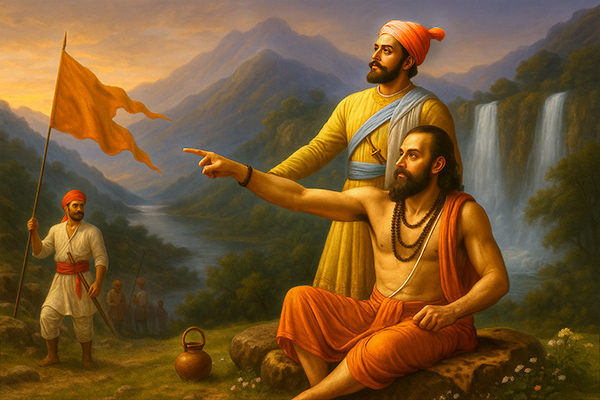
One of the most widely shared traditions that reflects the cultural weight of Bhagwa is the story of Samarth Ramdas, the revered 17th-century saint and philosopher. He is known to have been a spiritual guide and inspiration to Chhatrapati Shivaji Maharaj, the great Maratha king.
According to accounts from the Ramdasi Sampradaya, when Shivaji sought Ramdas's blessings to establish a kingdom based on Dharma, the saint did not offer him gold or counsel, he gave him a Bhagwa Dhwaj.
He said, 'Let this flag fly high over your kingdom, not as a symbol of conquest, but of Dharma. Rule not for power, but for righteousness.'
That saffron flag became the spiritual emblem of Shivaji’s Swarajya. A kingdom rooted in justice, spiritual values, and protection of the righteous. It signalled that both the saint and the ruler stood for the same truth; one through silence, the other through action.
A Colour of Sacrifice and Strength
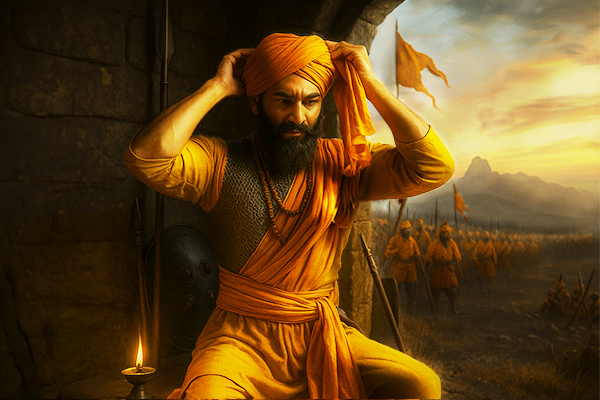
Historically, even Kshatriyas (warrior classes) would don saffron robes before going to battle. Especially when they knew they might not return. Wearing saffron was a vow: “I am ready to offer my life in service of a higher cause.”
In modern India, the saffron colour remains a symbol of spiritual leadership and national identity. It is one of the three colours of the Indian national flag, representing courage, sacrifice, and service.
Bhagwa is not just for saints. It belongs to anyone who chooses the path of inner fire. Who walks through life with clarity, courage, and commitment to truth.
Why Saints and Sadhus Choose Orange/Saffron
For a Hindu saint, putting on the saffron robe is not a change of appearance. It's a transformation of purpose. It marks the moment when the individual steps away from worldly identity and begins to live purely for the pursuit of spiritual truth.
This robe is not worn for others to see; it is worn as a reminder to the self.
The Deeper Spiritual Meaning
Here’s why saints and sadhus consciously choose saffron or orange robes:
-
It signifies a life beyond the personal self
Wearing Bhagwa means the person no longer lives for personal ambition, pleasure, or recognition. It declares, “This life is now guided by Dharma, not desire.” -
It reflects inner stillness and restraint
The colour, though vibrant, is not worn to attract. It invites silence. It signals simplicity. It reminds the wearer to remain centred, even in chaos. -
It connects the seeker to a timeless lineage
Rishis in the Vedas, yogis in the Himalayas, and sages through the ages, all have walked this path. Wearing saffron means walking in their footsteps, carrying forward the spirit of their renunciation. -
It helps dissolve ego and outer identity
In saffron, names fade. Roles fade. All that remains is the awareness that “I am not the body, not the mind, I am the witness.” The robe reinforces that shift every day. -
It awakens the inner resolve
Living with detachment is not easy. The robe acts as a quiet companion, reminding the saint of the choice they’ve made and the discipline it requires. -
It aligns with yogic energy
In yogic philosophy, colours influence subtle energies. Saffron is believed to stimulate clarity, vitality, and the inner strength required for long hours of meditation and mantra sadhana. -
It humbles, not elevates
True saints wear saffron not to stand apart, but to blend into the path of surrender. The robe is not a mark of status; it is a sign of having given everything up.
To wear saffron is to say - “I own nothing. I claim nothing. I seek only the eternal.”
Is There a Difference Between Orange, Saffron, and Bhagwa?
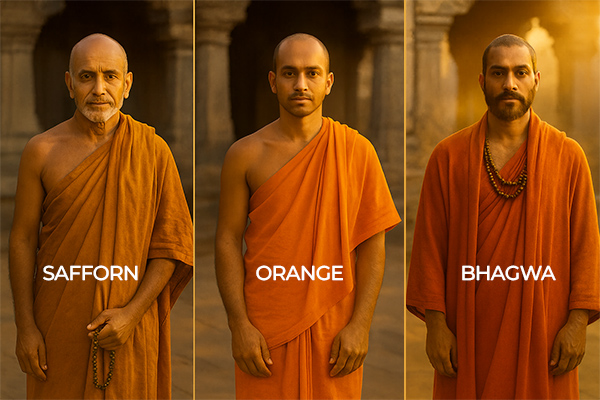
You may have noticed saints wearing robes in slightly different shades, from light orange to deep ochre. While these colours appear similar, they carry subtle variations in name, shade, and context.
Let’s break it down:
- Saffron : The term “saffron” is commonly used in English to describe the traditional ochre colour worn by Hindu monks. It is usually a deep golden-orange tone, made using natural dyes such as turmeric or bark.
- Orange : Orange is a broader modern term, often used interchangeably with saffron in everyday conversation. It may refer to lighter or brighter variations of the robe, and is more commonly seen among wandering sadhus and new initiates.
- Bhagwa : “Bhagwa” is the traditional Sanskrit and Hindi term used in scriptural and cultural contexts. It doesn’t just refer to the colour, it carries the weight of meaning: sacrifice, renunciation, and the flame of Dharma.
Colour Variations and Their Meanings
- Lighter shades of orange are often worn by brahmacharis or new seekers
- Deeper saffron or ochre is typically associated with advanced sannyasis or monks
- In certain sampradayas (spiritual lineages), the exact shade may vary based on tradition, initiation level, or even geographic region
No matter the tone, all these colours ultimately point to the same vow. To walk the path of truth, simplicity, and inner purity.
It’s not the shade that defines the saint. It’s the sincerity behind the robe.
In the vast landscape of Hindu spirituality, the saffron robe is more than fabric, it is a flame that lives on the body.
It tells the story of renunciation without speaking a word. It reflects the inner courage to walk away from the known and step into the pathless path of self-realization.
Whether worn by a forest-dwelling sage, a silent yogi, or a wandering sadhu, the Bhagwa cloth represents purity of intention, steadiness of purpose, and surrender to a higher truth.
It does not make one enlightened. But it calls one, every day, to live like they are walking toward it.
Experience Authentic Vedic Puja with Rudra Centre
The saffron robe of a saint represents the same spirit of renunciation and inner fire that inspires countless sacred rituals in Hindu tradition. If you wish to connect more deeply with the transformative power of Vedic practices, you can participate in authentic online pujas guided by learned priests at Rudra Centre.
These pujas follow precise scriptural methods and help you align your mind, energy, and intentions toward Dharma, just as the saffron robe symbolizes.
Click on the link to explore Rudra Centre’s Online Puja Services to book powerful rituals for health, prosperity, spiritual upliftment, and inner peace, performed with complete devotion and authenticity.


-in-Astrology.jpg)
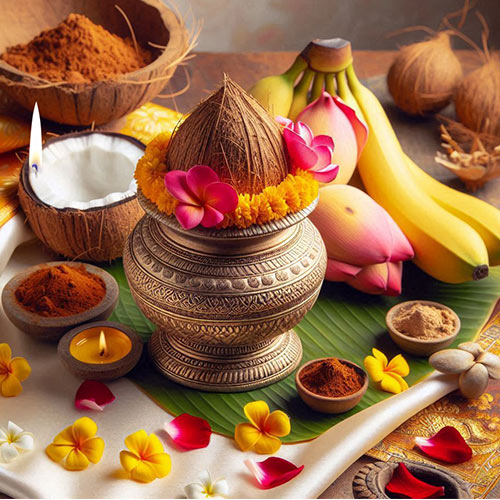
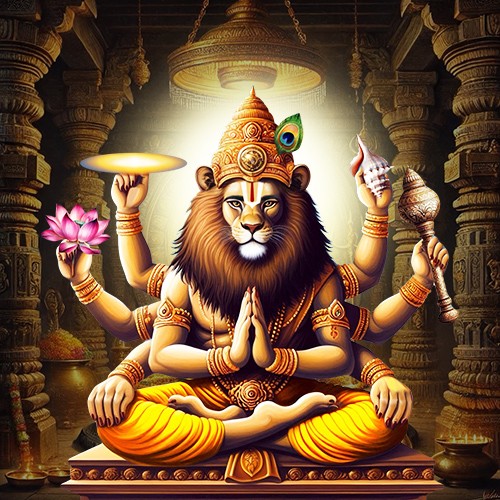
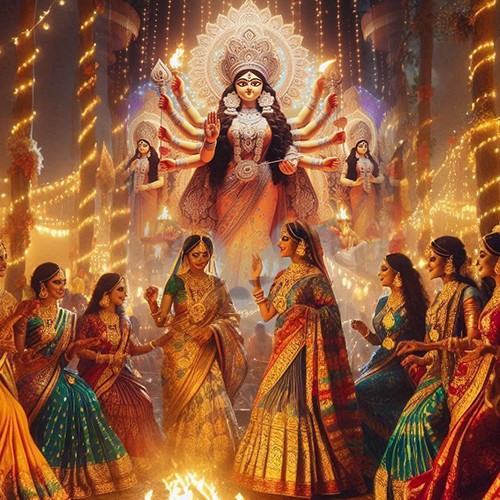
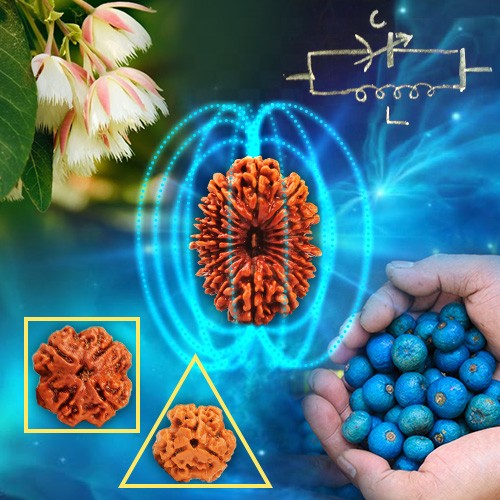

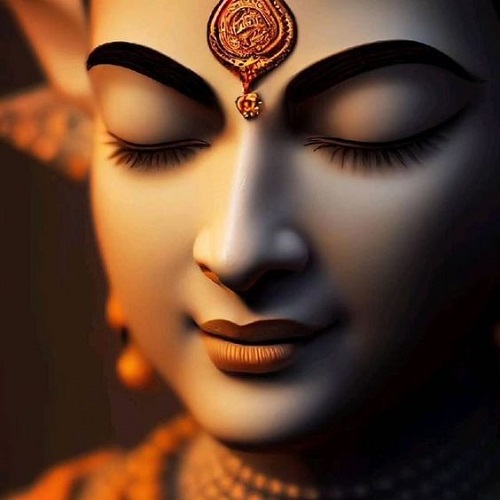
.jpg)
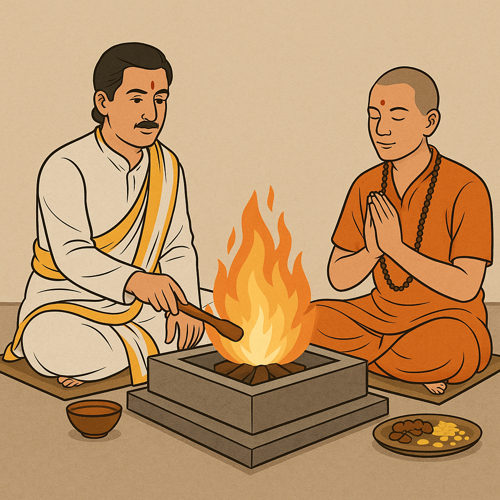
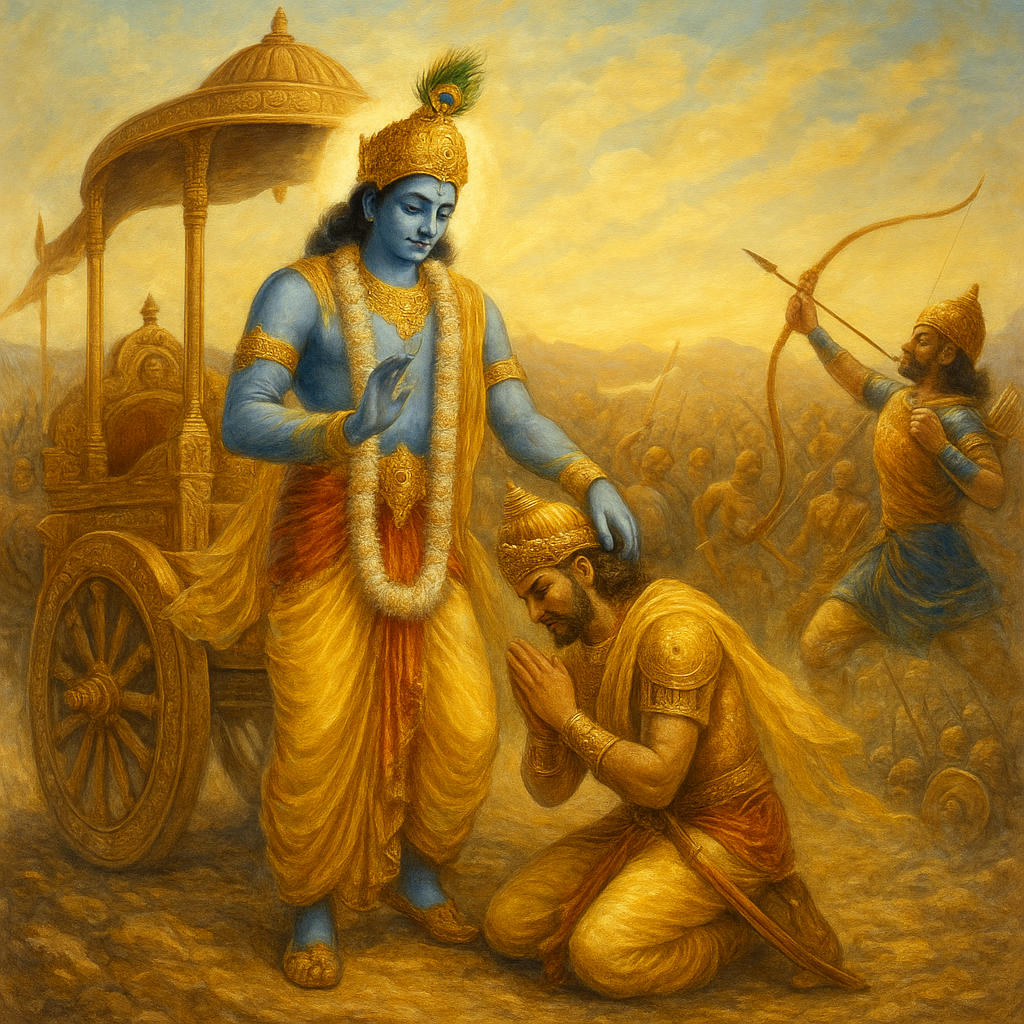
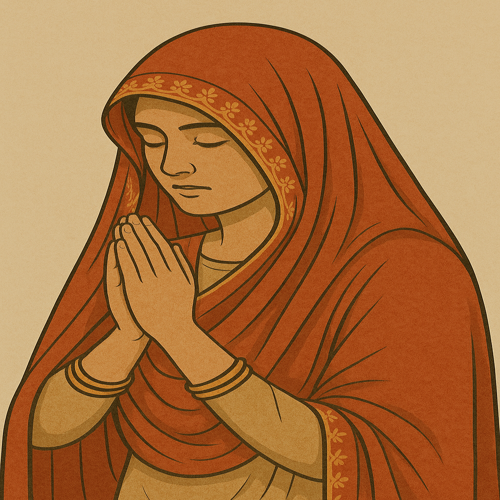
Comments 0
Leave your thought here